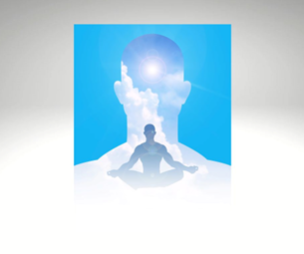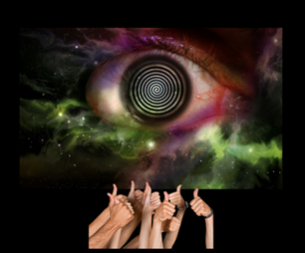What Happens to Our Mind When It Is Under Stress? (Part 2 of 4)
This is part 2 of a four-part series on using hypnotherapy to help you reduce your performance anxiety. Want to read more? Part 1, Part 3, Part 4

In our last blog post, we learned about how most people have some form of performance anxiety. Despite this, we are taught that it is a bad thing that must be avoid...when truthfully it's just a natural part of the human mind. We also learned that doctors will often take the easy way out and prescribe medication to treat even mild cases of anxiety. But, anxiety can be a good thing. Anxiety is manifested from an overabundance of adrenaline. So why not actually use that adrenaline to our advantage?
After all, adrenaline powers the fight or flight mechanism and is the chemical we produce when under stress. Before we can know how to harness that adrenaline (anxiety) for pushing us to new levels of success, we must first understand how stress works in our mind.
Left Brain vs. Right Brain
Our brains can be thought of as being comprised of two basic regions – the left hemisphere and the right hemisphere. This is an oversimplification of the immense complexity of our brain; however, this is a very effective model when it comes to understanding optimal mental states for performance.
Left brain thinking is associated with words, numbers, logic, analysis, criticism, rules, details, planning, and judgment. When this area of our brain becomes overloaded, it moves into a sympathetic shock state, like the proverbial “chicken with its head cut off.” This shock state is characterized by frantic multi-tasking, work-a-holism and overwhelming confusion. The to do lists get longer and we become more overwhelmed. This state of mental overload undermines all of the performance goals we have set for ourselves.
Conversely, right brain functioning is associated with creativity, feelings, sounds, images, patterns, kinesthetic or sensory input, the “big picture.” Here we can bring in the antidote to sympathetic shock which is parasympathetic functioning. This is quieting, grounded and more focused. However, when this tendency goes to an extreme, it moves into a parasympathetic shock, a state of withdrawal, shut down and numbness.
Based on this information, which mode of thinking seems most conducive to effective performance?
The left brain!
Now, which seems most conducive to dynamic, inspired, creative and artistic performances?
The right brain!
Unfortunately, we often do the opposite. During practice, we have a tendency to perform somewhat mindlessly, merely repeating movements or passages over and over until they sound better, making corrections, but doing so almost unconsciously, in a disconnected trance.
However, as soon as we walk on stage or begin our athletic performance, we tend to get flooded by left brain over-analytical thinking, self-criticism, excessive planning, and so on. This only serves to lead to a pre-occupation with technical details and an inability to play or perform as freely and automatically as we are capable. Are you familiar with the phrase “paralysis by analysis?” This is exactly what happens when we know that our every move and sound is under close scrutiny by others, or worse, by ourselves.
The opposite of this paralyzed state is often referred to as “ being in the flow” or “in the zone,” where everything just seems to “click” into place and our playing or performance is easy, free, and effortless. We are connected to ourselves, our dogs in the case of dog agility and perhaps to our audience if we are performing in front of others. Some describe it as the feeling of connection. It is the experience all performers are looking for. It is why they spend thousands of hours practicing, thousands of dollars travelling all over; it is actually for some, a form of spiritual quest, searching for the experience of oneness, being in the zone.
The question now is, how do we make the shift from left brain critical thinking to right brain sensory experiencing and get into “the zone”? There are two major parts of this process:
To learn more, simply click either of those topics above. I recommend starting with focused energetic breathing and then moving to active mental rehearsal.









